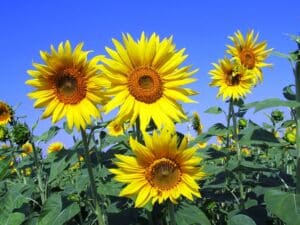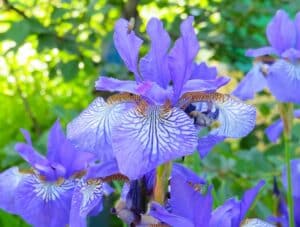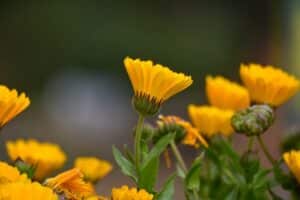Last Updated on June 29, 2023
This article is packed with fun and interesting facts about flowers to entertain and educate.
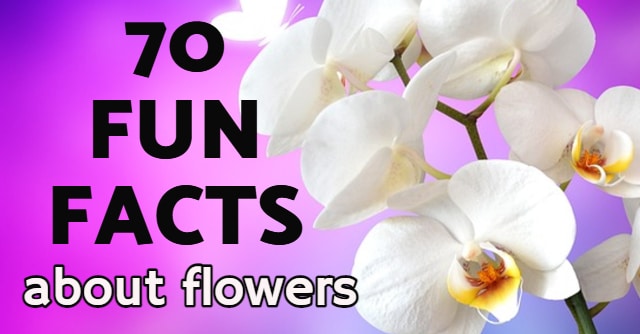
Do you know that some flowers can change colors? And others have a really bad smell?
Are you aware that what was said “under the rose” must be kept secret? Or that honey from oleander blossoms is poisonous?
Keep reading to discover some mind-blowing amazing flower facts.
Here is some fun information about flowers that you probably didn’t know.
So, grab a cup of coffee and get ready to learn some fun flower trivia!
*This post contains affiliate links. If you choose to purchase any of the products I have recommended, I may receive a commission at no cost to you.
TOP 10 FACTS ABOUT FLOWERS
1. Which is the smallest flower in the world?
The smallest flower in the world is watermeal (Wolffia spp). It belongs to the duckweed family. These plants look like tiny, green, or yellow-green free-floating globes on the surface of ponds, streams, lakes, and marshes.
The watermeal plant is very small. It can be about the size of a candy sprinkle. It weighs about the same as two grains of table salt. You would need to use 5000 plants to fill up one thimble!
2. What is the largest flower in the world?
The Rafflesia arnoldii is the flower with the largest bloom. You can find it in Indonesia’s rainforest. This 5 petal flower is reddish with white marks, it can reach 3 feet in diameter and weigh up to 15 pounds.
This parasitic flowering plant has no leaves, roots, or stem. It attaches itself to a host plant for water and nutrients.
3. Which is the stinkiest flower in the world?
Rafflesia arnoldii is also the stinkiest flower in the world. When Rafflesia blooms, it smells like rotting flesh. That is why this flower is also known as ‘Stinking Corpse Lily’. The smell attracts insects which pollinate the plant. The bloom lasts only 5-7 days.
By the way the runner up in the stinkiest flower category is Titan arum which is also the tallest flower on earth.
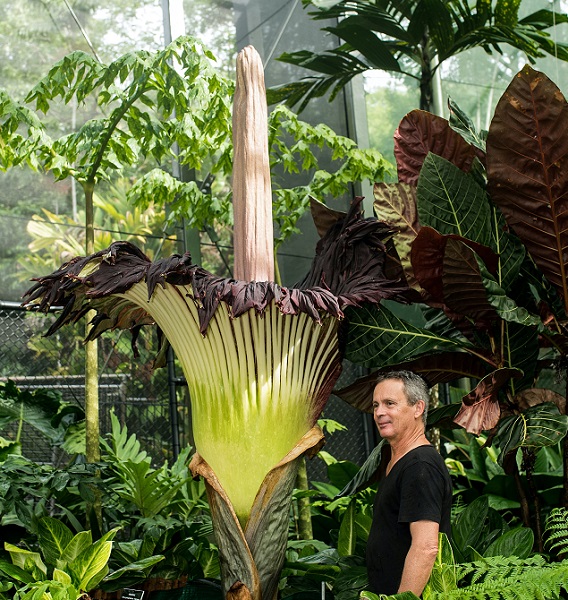
The tallest and the stinkiest flower in the world – Titan arum.
Photo by David Clode on Unsplash
4. What is the tallest flower in the world?
According to Guiness world record The tallest flower on Earth grows on Sumatra. It is called Titan arum (Amorphophallus titanum). It looks like an inverted mushroom and rises about 3-4 meters (about 13 feet) above the ground. Its underground tuber weighs about 100 pounds.
This giant is also one of the smelliest flowers in the world and often referred to as ‘Corpse Flower’ because it spreads around a putrid smell of rotten meat. Good news is that this stinky plant blooms only once every seven to nine years with each bloom lasting just for 24 to 36 hours.
5. Which flower is the most poisonous in the world?
The common oleander (Nerium oleander) is a poisonous shrub whose blossoms come in three colors: crimson, magenta, and creamy white.
The entire plant is toxic, from its sap to its stem. It’s known that some of Napoleon’s soldiers died after eating meat cooked on oleander sticks.
The toxins in oleander blossoms are so strong that people have become ill after eating honey made by bees visiting these flowers!
6. What is the shortest blooming flower?
Selenicereus grandiflorus commonly referred to as ‘Queen of the Night’ is a type of flowering cactus that only blooms once a year on one very special night.
7. What is the longest blooming flower?
Anthurium has the longest blooming flowers. This tropical plant produces pretty white, pink, maroon or orange flowers that can bloom up to 8 weeks. Anthurium is very forgiving and easy to grow indoors as a houseplant, so get one for your home.
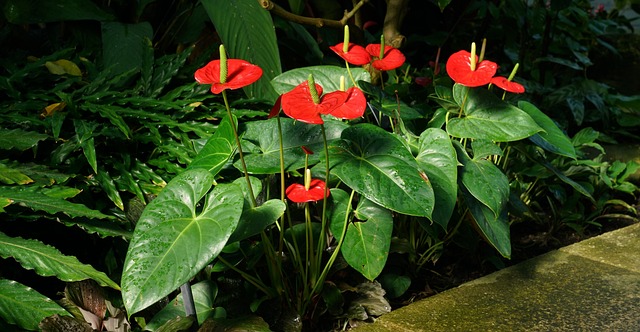
8. Which is the world’s oldest flower?
The Archaefructus sinensis is the world’s oldest flower. It was found in a fossil in 2002 and it is believed to have bloomed 125 million years ago in China.
Another flowering plant competing for being labeled as the world’s oldest flower is Montsechia, which fossil was found in Spain. Scientists believe it existed around 130 million years ago. This flower even didn’t have petals – its pollen floated in water instead of floating in the air.
Both are dated to exist around 130 million years ago in the early Cretaceous.
9. What is the rarest flower in the world?
The rarest flower on Earth is the Middlemist’s Red (Middlemist camellia). It has only two specimens at present time: one in New Zealand and the other – in England. The flower was named after John Middlemist who brought it to England from China in 1804.
10. Which is the most expensive flower in the world?
The most expensive flower ever sold is Shenzhen Nongke Orchid. It took Chinese scientists eight years of research to create this flower at the lab of Shenzhen Nongke University. It only blooms every four or five years. In 2005, this flower was sold for $202,000 at an auction to an anonymous bidder.
More fun facts about flowers
- Flowers are the reproductive part of flowering plants. And we enjoy smelling them. Weird, isn’t it? 😀
- Flowers like tulips, crocuses, hibiscus, and poppies close at night. This behavior is called nyctinasty. Scientists believe that plants are doing it to protect their pollen from getting wet from dew, because insects carry dry pollen better than wet pollen, which means there is a higher chance for reproduction.
- Cacti, referred to as night-blooming cereus, bloom all at once at night. it is difficult to comprehend how they know when to bloom at the same time. Researchers believe that it might be some type of chemical communication, but they are not sure yet. The Hawk Moths usually spread their seeds and so night-blooming cereus bloom together on the same evening to increase the possibility for pollination.
- There are no white flowers. White lilies, roses, or lilies-of-the-valley are not actually white, but colorless. Their petals do not have any color pigments and simply reflect sunlight.
- There is also no black pigment in the world of flowers either. The black color of the petals is just a visual illusion. What we think of as black is actually either a rich maroon or deep purple For example, Black Orchid – the national flower of Belize – is actually dark brown and maroon.
- Only 10 percent of the 369,000 flowering plants on Earth are blue. This makes blue the rarest flower color.
- Artichokes, broccoli, and cauliflower are flowers.
- Figs are not actually fruits, but rather many little flowers and seeds located inside a very enlarged and fleshy stem, The crunchy little things that you notice when eating a fig are seeds, each corresponding to one flower.
- The most fragrant flowers are gardenia, common jasmine, Chinese wisteria, and sweet asylum.
- Some flowers like calla lilies, hibiscus, sunflower, daphnia, and poppies are fragrance-free. They attract pollinators by the bright color of petals, instead of sweet aroma.
- The largest water lily in the world is Victoria amazonica (or Victoria Regia).The largest flowers of this plant can measure 10-12 inches in diameter. Its leaves can reach 10 feet in diameter and are able to hold 65 pounds (the weight of an adult). On the underside of Victoria regia leaves are sharp spikes that protect the water lily from fish. This lilyr is the national flower of Guyana.
- Hydrangea flower color can range from red and pink to blue and deep purple, and it’s determined by the soil pH.
- Evening primrose (genus Oenothera) is an example of a flower that undergoes color changes due to senescence (aging). It’s flowers that appear to be white or yellow in the evening, can fade to pink or orange by morning.
- Flowering plants can reveal much of the underlying geology. Violets prefer soils with a high zinc content, and one of the carnation relatives – Kachim paniculata – is indicative of close deposits of copper ore.
- A number of flowering plants are good indicators of soil acidity. Red clover and sweet clover grow only on soils with an alkaline or neutral reaction, and buttercup or violet grow only on strongly acidic ones.
- The Rhizanthella orchid that grows in Australia blooms underground. It is pollinated not by bees, but by beetles.
- Hydnora africana, a flower that grows in Southern Africa, has the appearance of a female reproductive organ. The odor this flower exudes smells like poop.
- On the slopes of the mountains of South America, you can find the Puya Raimondii flower (also known as Queen of the Andes), which opens its petals only once every 150 years, and then dies.
- The word “flower” comes from the Old French word “fleur” or “flour”, which comes from the Latin word “flos” or “flor” (meaning flower). In Middle English, the word was spelled as “flour” till the end of the 17th century.
- Flora was the Roman goddess of spring and flowers. In Latin, Flora means “flower.”
- Every year, on January 1st residents and visitors of Pasadena, California gather to watch a 133-year tradition: the Rose Parade. This colorful event features more than 40 floats, each of them covered in thousands of fresh cut flowers.
- According to legend, on one of the days of Creation, when God was giving names to all flowers, he heard from one of them: “Forget me not!”. “So you’ll be called,” God replied.
- The name “gladiolus” was given to the flower by the ancient Roman writer Pliny the Elder. He drew attention to the similarity of the plant with the weapons of gladiators. The name “gladiolus“ comes from Gladius, which means “sword”.
- In the Bible there is a mention of a lily-of- the-valley flower that grew out of the tears of Eve, when she was expelled from paradise.
- The world’s first flower clock was planted in 1720 in Switzerland. The dial was divided into 12 sectors, planted with different types of flowers that bloomed at different times of the day. The clock showed the time with an accuracy of half an hour. Unfortunately, on cloudy days,it didn’t work, since some of the flowers did not open at all without the sun.
- Scientists have proven that flowers react differently to people depending on how they treat them.
- Flowers have an immediate impact on mood and happiness. According to Rutgers University research, all study participants upon receiving flowers demonstrating extraordinary delight. This reaction was lasting and occurred in males and females in all age groups.
- The vast majority of personal commercial fragrances have a floral top- and/or mid-note.
- Gerbera daisy is the best selling flower in the U.S.
- Floriculture crops sales in the United States estimated at $4.80 billion for 2020. California and Florida account for 44 percent of the total value.
Rose facts
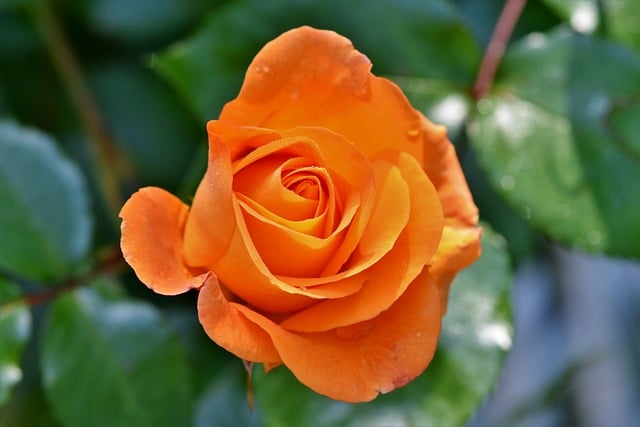
The rose is the most popular and most beautiful flower in the world
- Rose is the most popular flower in the world. People have bred about 50,000 roses and their hybrids.
- The wild rose has only 5 petals, but in artificially bred rose varieties the number of portals can reach 128.
- The oldest living rose in the world was planted in the X-th century in Germany. It still blooms each year.
- In medieval times, anything that was discussed in a chamber with a rose suspended from the ceiling, was understood to be secret and was forbidden from being disclosed elsewhere. That is why the term ‘sub rosa’ (under the rose) means ‘in secret’.
- In 1986 the rose was declared the National Flower of the USA in a special ceremony in the White House Rose Garden.
*Find out more interesting information about roses in my Facts about roses article.
Tulip facts
- Tulip is a close relative of asparagus, onions and garlic. In medieval Europe tulips bulbs were used as food. Fresh bulbs were added to gravy , since tulip bulbs are a good substitute for onions in cooking. Dried and powdered bulbs were mixed into flour.
- In 1637, at the height of the Dutch Tulip Bulb market bubble, the cost of a single tulip bulb surged to 10,000 guilders, equal to the value of a mansion on the Amsterdam Grand Canal.
Peony facts
- The peony was named after Paeon, who was a student of Asclepius – Greek god of medicine and healing. One version of the story goes that Paeon healed Zeus’ wound by using peony which made Asclepius extremely jealous of his student. Zeus saved Paeon from Asclepius rage by turning him into a peony flower.
- With good care, the peony bush is able to bloom for almost a hundred years.
- Peonies played an important role in early Chinese history. Members of the Tang Dynasty of China began breeding them in imperial courts during the 7th century before the common era and the peony was considered the national flower of China in previous history.
- Traditionally peonies are gifted to couples for a nickel wedding (twelfth wedding anniversary).
About lotus flowers
- Lotus is an aquatic perennial, sometimes mistaken for the water lily. Some research reports indicate that the lotus plant can control its own temperature.
- The white lotus is the only plant to fruit and flower simultaneously.
- In Ancient Egypt lotus flower was the symbol of sun because it closes at nightfall and opens at dawn. According to Egyptian myth about creation, a giant lotus flower grew out of a pond and from it, the sun rose.
- Lotus is a symbol of spiritual awakening in Hinduism and Buddhism.
- At present time, the lotus flower is a very popular tattoo.
Orchid facts
- Orchids form the world’s largest family of plants. Biologists at Harvard University discovered that the orchid family is up to 80 million years old.
- The most expensive orchids are from Malaysia. “Gold of Kinabalu”, as this rare species is called, blooms for the first time only at the age of 15. One shoot of a unique flower is sold for 5 thousand dollars.
- The lady’s slipper orchid – one of the most beautiful orchids in Europe – grows only on limestone soils. It’s botanical name is Cypripedium calceolus (calceolus from chalix, old Latin name of limestone).
Sunflower facts
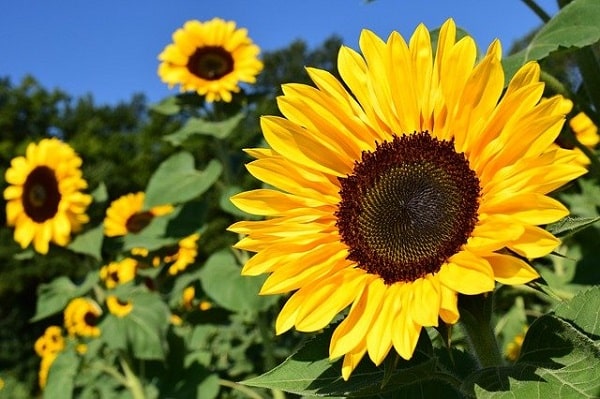
Sunflower – national flower of Ukraine.
- Sunflowers are always facing the sun. They actually look toward the sun as it rises in the east and follow it across the sky until it sets in the west.
- Sunflower is one of only a few native North American crops (along with squash, blueberries and pecans).
- Sunflowers were brought to Europe by Spanish sailors in the 16th century.
Chrysanthemum facts
- The Japanese imperial family used the image of the chrysanthemum on official seals and the throne. The chrysanthemum flower remains the symbol of the Japanese emperor today.
- Chrysanthemum appears on Japan’s 50 yen coin.
- In some European countries, such as France, Italy, Spain, Poland, Hungary and Croatia, chrysanthemums are only used for funerals or on graves.
- September 9 is Japan’s National Chrysanthemum Day. It is also the festival of happiness. The holiday was established in 910 AD when the first chrysanthemum festival was held.
A list of national flowers
Flowers have been used for centuries as symbols to represent specific countries or regions with their own unique identity.
Here is a sample of national flowers of some countries:
Rose – United States, England, Cyprus, Chech Republic, Ecuador, Iraq, Iran, Luxembourg, Maldives, Slovakia
Orchid – Venezuela, Honduras, Hong Kong, Seychelles, Singapore, Brazil, Belize, Cayman Islands, Guatemala, Colombia, Costa Rica
Poppy – Belgium, Poland
Tulip – Hungary, Holland, Turkey
Carnation – Spain, Slovenia, Sicily
Lotus – Egypt, India
Edelweiss – Austria, Switzerland
Shamrock – Ireland
Iris – France
Lily-of-the-Valley – Finland
Sunflower – Ukraine.
A list of U.S. state flowers
In the United States, individual states also have their flower symbols.
Alabama – Camelia
Alaska – Forget- Me- Not
Arizona – Saguaro Cactus
Arkansas – Apple Blossom
California – Golden Poppy
Colorado – Columbine
Connecticut – Mountain Laurel
Delaware – Peach Blossom
Florida – Orange Blossom
Georgia – Cherokee Rose
Hawaii – Yellow Hibiscus
Idaho – Syringa
Illinois – Native Violet
Indiana – Peony
Iowa – Wild Rose
Kansas – Sunflower
Kentucky – Goldenrod
Louisiana – Magnolia
Maine – White Pine Cone
Maryland – Black Eyed Susan
Massachusetts – Mayflower
Michigan – Apple Blossom
Minnesota – Lady Slipper
Mississippi – Magnolia
Missouri – Hawthorn
Montana – Bitterroot
Nebraska – Goldenrod
Nevada – Sagebrush
New Hampshire – Purple Lilac
New Jersey – Purple Violet
New Mexico – Yucca
New York – Rose
North Carolina – Dogwood Blossom
North Dakota – Wild Prairie Rose
Ohio – Scarlet Carnation
Oklahoma – Mistletoe
Oregon – Oregon Grape
Pennsylvania – Mountain Laurel
Rhode Island – Violet
South Carolina – Yellow Jessamine
South Dakota – Pasque Flower
Tennessee – Iris
Texas – Blue Bonnet
Utah – Sego Lily
Vermont – Red Clover
Virginia – Dogwood
Washington – Rhododendron
West Virginia – Big Rhododendron
Wisconsin – Wood Violet
Wyoming – Indian Paintbrush
The secret language of flowers – floriography
Although people have been interested in floriography throughout history, the Victorian era saw the strongest interest in this form of communication. This happened because during the 19th century social values were very conservative, so people used floriography to communicate secretly about things like courtship and affairs.
A certain meaning was assigned to each flower, which allowed lovers to exchange secret messages. For example, a yellow carnation meant rejection, modest blue violets assured fidelity, daffodil meant unreturned love, and a bouquet of red roses was equated with a marriage proposal.
If you want to master the language of flowers, read Floriography: An Illustrated Guide to the Victorian Language of Flowers.
Birth month flowers
Depending on the month you were born, you’ll have two birth month flowers.
What’s your birth flower? Check it out!
Birth flowers by month:
January – Carnation & Snowdrop
February – Violet & Primrose
March – Daffodil & Jonquil
April – Daisy & Sweet Pea
May – Lily of the Valley & Hawthorn
June – Rose & Honeysuckle
July – Larkspur & Water Lily
August – Gladiolus & Poppy
September – Aster, Morning Glory
October – Marigold, Cosmos
November – Chrysanthemum, Peony
December – Narcissus, Holly
Related reading:
Discover more articles about flowers
Final notes on fun facts about flowers
Flowers are some of the most beautiful and diverse creations in the world. With 369,000 flowering species in the world, there’s a flower for everyone.
I hope you’ve enjoyed the information about flowers in this article. Be sure to share this interesting plant trivia with your friends – they’ll be surprised at how much they didn’t know!
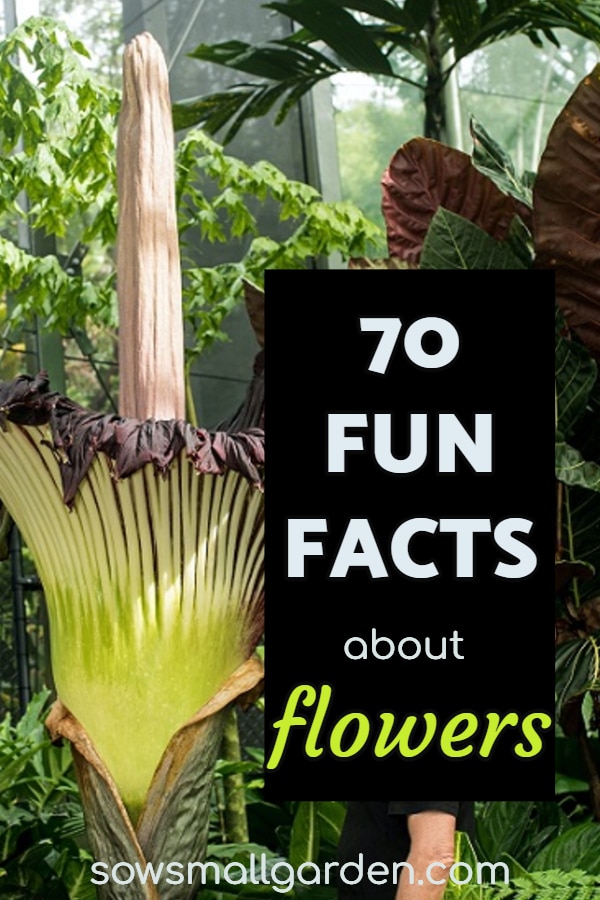
Pin for later reference!
You have read:


